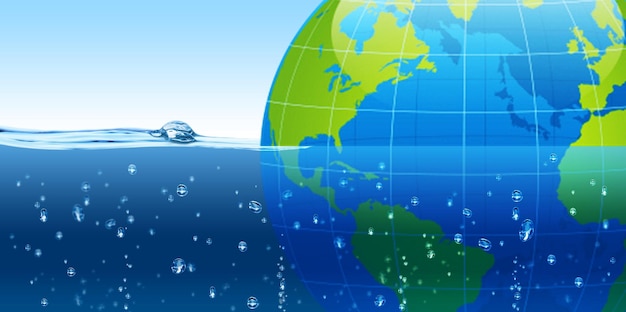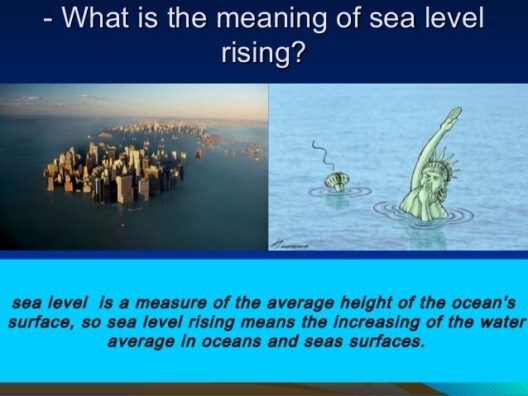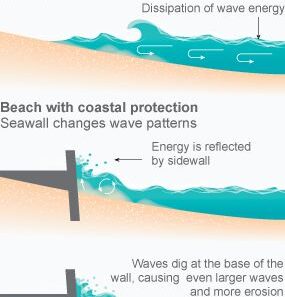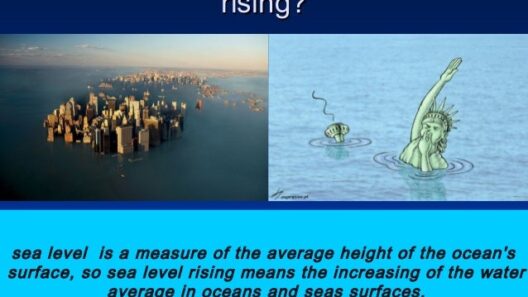The relentless rise of sea levels is one of the most pressing environmental concerns of our time. As the world’s temperatures increase, ice caps are melting, and the oceans are expanding, which leads to a gradual yet significant increase in sea levels. Understanding the pace at which this phenomenon is occurring is crucial for societies worldwide, as it shapes our future landscape, economies, and ecosystems.
Globally, sea levels are rising at an alarming rate, with the average increase measured at approximately 3.3 millimeters per year over the last few decades. However, this number is not static; it fluctuates based on various factors such as geography, climate change, and human intervention.
To grasp the urgency of this crisis, it is essential to delve into the multifaceted reasons behind these changes, the variations seen in different regions, and the forecasting models that predict future scenarios.
The Mechanisms Behind Rising Sea Levels
The phenomenon of rising sea levels is primarily driven by two interlinked processes: thermal expansion of seawater and the melting of glaciers and ice sheets. The world’s oceans are absorbing a significant amount of heat from climate change. As water warms, it expands, contributing to elevated sea levels. This process accounts for about half of the total sea-level rise observed since the mid-20th century.
Moreover, the melting of the Greenland and Antarctic ice sheets poses an increasingly dire threat. As large masses of ice from these regions break apart and flow into the oceans, they add substantial volumes of freshwater to the seas. In addition to these natural processes, human activities, such as the extraction of groundwater and increased deforestation, exacerbate the situation, as they can lead to a decrease in land elevation.
Regional Variations in Sea Level Rise
While the global average may hover around 3.3 millimeters annually, regional variations in sea level rise tell a more complex story. Coastal cities, particularly those located in low-lying areas, face a disproportionate risk. For instance, the Eastern United States is experiencing a rise of approximately 4 millimeters per year due to a combination of land subsidence and oceanic changes. Conversely, parts of the Arctic demonstrate slower rates due to unique geological and oceanographic characteristics.
Urbanization and human infrastructure, too, play a pivotal role in how sea levels impact various locales. Coastal cities such as Miami, New Orleans, and Jakarta are grappling with the reality of rising waters, elevating the acuteness of this issue. In some areas, the groundwater depletion and constant barrage of storms only serve to compound the effects. Understanding these regional disparities empowers communities and policy-makers to implement tailored strategies to combat the effects of climate change.
The Predictions: Tomorrow’s Tides
Looking into the future, projections indicate that sea levels could rise anywhere between 0.3 to 2.5 meters by 2100, depending largely on the trajectory of global greenhouse gas emissions. Models such as those developed by the Intergovernmental Panel on Climate Change (IPCC) factor in various emission scenarios, ice sheet dynamics, and the likelihood of extreme weather patterns. The prospect of these changes can evoke a sense of urgency and unease, as entire nations risk inundation and displacement.
The potential ramifications are staggering. Economies reliant on coastal tourism and fishing may face collapse, while infrastructure spending on defense strategies—such as seawalls, drainage systems, and flood barriers—may become unsustainable. The displacement of populations from affected areas leads not only to humanitarian crises but also exacerbates political tensions, as resources become scarce.
A Call to Action: Preparing for the Future
In light of this knowledge, action becomes imperative. Communities and governments around the world must foster resilience against the impending changes. This necessitates implementing adaptive infrastructure, revising land-use policies, and enhancing early warning systems for flood risks. Moreover, further scientific studies and public engagement initiatives can elevate awareness and galvanize collective action.
The fight against rising sea levels is not merely about combating climate change; it is also about securing the sustenance of future generations. By investing in sustainable practices, renewable energy technologies, and innovative urban planning initiatives, society can pivot towards a more resilient future.
Engagement at every level—from local communities to global leaders—is essential for championing solutions. In reshaping our perspective, we begin to view the rising tides not solely as a harbinger of doom, but rather as a clarion call for introspection and proactive change.
In conclusion, while current estimates illustrate a clear trajectory of rising sea levels at approximately 3.3 millimeters per year, understanding the various factors that contribute to regional differences and future predictions enhances our perspective on this crucial issue. It emphasizes the urgency of the moment, highlighting the necessity for comprehensive action and robust adaptation strategies that can safeguard our planet for posterity.







